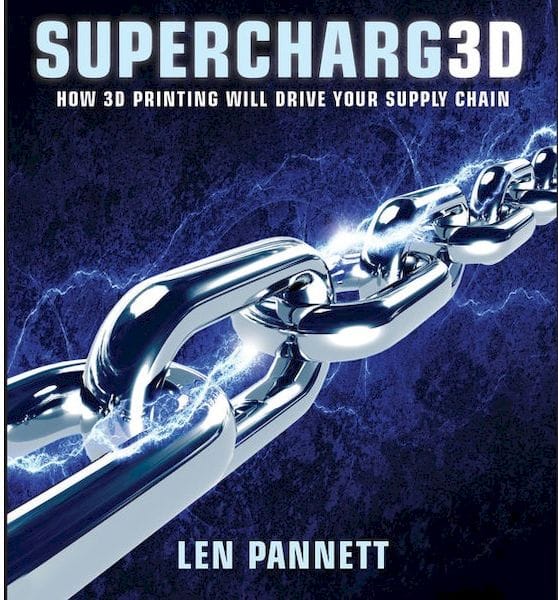![Supercharg3D: How 3D Printing Will Drive Your Supply Chain [Source: Amazon]](https://fabbaloo.com/wp-content/uploads/2020/05/image-asset_img_5eb0952d43c4d.jpg)
This week’s selection is “Supercharg3D: How 3D Printing Will Drive Your Supply Chain” by Len Pannett.
Supply chains are a thing consumers and customers rarely see and likely don’t understand. But the concept and execution of a proper supply chain is what powers today’s industries. These complex processes, often spanning the globe, enable materials to be at the right place and at the right time to ensure business can take place.
In the world of 3D printing we’ve seen multiple examples of startup ventures failing miserably because they did not understand the complexities of managing a supply chain. If you intend to build 10,000 units, where and how will you obtain the 40,000 stepper motors required to build the machines? And will they arrive at the right location at the right time? If not, then there are problems, sometimes catastrophically big problems.
Pannett takes a very practical look at how the technology of 3D printing could potentially — and actually — affect such complex supply chains. The obvious notion would be to simply 3D print the parts where and when you need them, but that’s only the simplest of beginnings.
As is the case in most books delving into 3D printing for managers, this book does include several sections at the front that provide a brief education on the state of 3D printing technology. This is done so that supply chain managers reading the book can have a basic understanding of what’s going on in subsequent sections.
The explanation of 3D printing is not the usual list of 3D printing processes, but rather an exploration of capabilities. In fact, there’s one chapter dedicated to “What Can and Can’t be Done”, where aspects such as finish, cost, materials, speeds, locations, labor and other factors are explored.
Real Life 3D Printing In Supply Chain
One chapter is dedicated to investigating what Deutsche Bahn (the German railway carrier) has achieved by leveraging 3D printing in their business, so this is not just hypothetical thoughts on supply chain concepts.
Pannett examines each of the major stages in supply chain structures to see how 3D printing could make an impact. This covers such areas as “Make”, “Deliver”, “Return”, “Source”, “Plan” and “Enable”.
Pannett explores new types of supply chain models to see how 3D printing could fit within them, including: In-house manufacturing, Customer-located manufacturing, Customer-managed inventory, and Virtual 3D printed supply chains.
Long ago when 3D printing became a thing many proponents pointed to how it could potentially change the supply chain industry profoundly. Yet to date that hasn’t really happened. This book, for perhaps the first time, attempts to really understand this challenge in some detail.
Via Amazon











This week’s selection is “3D Printing Projects” by Dorling Kindersley, a.k.a. “DK”.